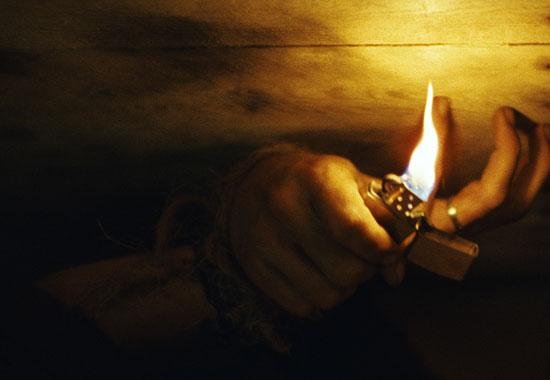962
In the 18th century, it was invented by "safe" coffin

"Safe," a coffin - a coffin, advanced any additional mechanism, not to be buried alive in the event of an error to allow the buried submit any signal.
A large number of safety coffin was patented in the 18th - 19th centuries. Modernized version is still available today.
Number of alarmist fears being buried alive peaked during the cholera epidemic in the 18th century, however, cases where people were buried alive were known previously. When the tomb of the philosopher Duns Scotus (1266 - 1308) discovered for reburial, they found John with bloody hands and broken fingernails. Apparently the poor man woke up and tried to get out of the grave, is not choked.
The fear of being buried alive led to the invention of various devices and mechanisms that could improve the coffin. The simplest version of the device - a cord tied to the bell, which interred person might call, if he is still alive. More advanced versions of the tombs include pyrotechnics, stairs, escape hatches, and even a tube for food. However, many have forgotten that it is first necessary to provide air flow.
The first documented safety coffin was made by order of the Duke Ferdinand before his death in 1792. He set the window to light penetrated into the coffin. Also set up, to ensure that the Duke of fresh air. Instead of nailing nails cover, set the lock. In a special pocket of his shroud he had two keys, one for the lid of the coffin and the grave of a second for the door.
PG Pessler, a German priest, suggested in 1798 that all the coffins installed tube, which would be a cord attached to the church bells. If a person would be buried alive, he could attract attention. Since the idea was impractical, Pesslera colleague, Pastor Beck, proposed to establish a small coffins in a short tube. Every day through a tube local priest could test the degree of decomposition of the corpse. If no smell of decay would not be detected, and the priest would hear cries for help, the grave could be dug up and buried alive would have been saved.
Dr. Adolf Gutsmut was buried alive several times to demonstrate the safety of the coffin of his own design. In 1822, he was buried for a few hours. Being under the ground, he even ate through a feeding tube and sausage soup with beer.
The system of using a cord attached to the body was impractical, because the natural processes of decomposition that often causes the body to swell or even change position, causing occasional tension on the cord and "false alarms." In 1868, Franz Vester solved this problem by adding a pipe, through which you can see the dead man's face. The tube could be used repeatedly, after the keeper of the cemetery would be convinced that the person has died.
In 1995 modern safety coffin was patented Fabrizio kazel. His project consisted of an alarm, intercom system, searchlight, breathing apparatus, a heart monitor and a stimulant.
Despite all the devices and accessories, there are no registered cases of saving people "safe" coffin.

Fact sent: ZhenyaJess
Source: www.redaktora.net
via factroom.ru
10 facts from the history of the USSR
Canadian Brian Zembik - is a "man with breasts, worth 100 thousand dollars"























